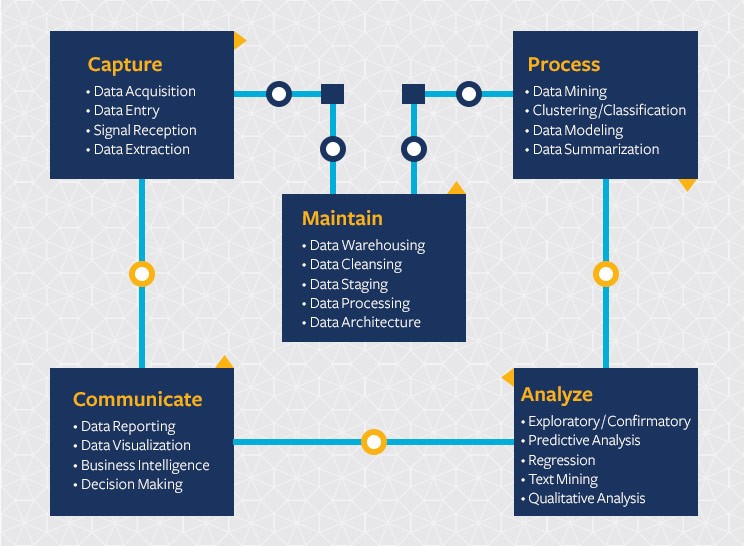Data Science continues to be a hot topic among skilled professionals and organizations that are focusing on collecting data and drawing meaningful insights out of it to aid business growth. A lot of data is an asset to any organization, but only if it is processed efficiently. The need for storage grew multifold when we entered the age of big data. Until 2010, the major focus was towards building a state of the art infrastructure to store this valuable data, that would then be accessed and processed to draw business insights. With frameworks like Hadoop that have taken care of the storage part, the focus has now shifted towards processing this data. Let us see what is data science, and how it fits into the current state of big data and businesses.
Broadly, Data Science can be defined as the study of data, where it comes from, what it represents, and the ways by which it can be transformed into valuable inputs and resources to create business and IT strategies.

Why businesses need Data Science?
We have come a long way from working with small sets of structured data to large mines of unstructured and semi-structured data coming in from various sources. The traditional BI tools fall short when it comes to processing this massive pool of unstructured data. Hence, Data Science comes with more advanced tools to work on large volumes of data coming from different types of sources such as financial logs, multimedia files, marketing forms, sensors and instruments, and text files.
Mentioned below are relevant use-cases which are also the reasons behind Data Science becoming popular among organizations:
– Data Science has myriad applications in predictive analytics. In the specific case of weather forecasting, data is collected from satellites, radars, ships, and aircraft to build models that can forecast weather and also predict impending natural calamities with great precision. This helps in taking appropriate measures at the right time and avoid maximum possible damage.
– Product recommendations have never been this precise with the traditional models drawing insights out of browsing history, purchase history, and basic demographic factors. With data science, vast volumes and variety of data can train models better and more effectively to show more precise recommendations.
– Data Science also aids in effective decision making. Self-driving or intelligent cars are a classic example. An intelligent vehicle collects data real-time from its surrounding through different sensors like radars, cameras, and lasers to create a visual (map) of their surroundings. Based on this data and advanced machine learning algorithm, it takes crucial driving decisions like turning, stopping, speeding etc.
